Three superheroines discover a villain’s plot to mould kidnapped children into bloodthirsty world leaders.
| Reviewed by: Deepagcharan
Known for iconic gangster films such as Election and Drug War, Hong Kong director Johnnie To’s Heroic Trio is a quirky gem that stands out as a sharp contrast to his gritty oeuvre. The 1993 classic blends campy superhero themes and slick action while incorporating nods to classic Hong Kong cinema. Heroic Trio embraces elements from the wuxia genre, such as wire-fu (acrobatics made possible by highwire sequences) with heroic bloodshed (namely themes of duty, honour, and bloodshed typically featured in Hong Kong action movies).
A zany time capsule that envisions a futuristic city, Heroic Trio in retrospect provides an inordinate experience; essentially, an amalgamation of sci-fi, action, and fantasy with a spectacular cast of three iconic actresses: Michelle Yeoh as Invisible Woman, Anita Mui as Wonder Woman, and Maggie Chueng as Thief Catcher. Personally, the film’s ability to generate a sense of exhilaration from its action sequences — due to the conflation of the acrobatic action sequence with the upbeat background score and jarring sound effects — left a deep impression on me. The action sequences were seminal and were even referenced in Cheung’s international breakthrough Irma Vep.
The story begins in a baffling manner — a fitting introduction to the film’s titular characters through visually arresting action sequences — where kids are being abducted for unknown reasons, with an inquiry underway to determine who is to blame. It is revealed that these newborns are being held in an attempt by Evil Master, played by Yam Sai-Koon. He is a fearsome eunuch(a classic figure in Wuxia films) finding the reincarnated Emperor of China and restores dynasty control. Our three brave heroes’ efforts to stop the antagonist form the crux of the story. However, the narrative follows a roller coaster ride of emotions as the heroes each have their own set of agendas but will ultimately require each other’s cooperation in order to defeat the Evil Master.  Heroic Trio Heroic Trio‘s primary protagonists wear superhero costumes and have superhuman abilities analogous to Marvel heroes. Wonder Woman conceals her identity from the outset, separating her personal and professional life. The factor of being able to compartmentalise between her duties and personal life enables audiences to resonate with their internal struggles and humanises these characters despite them being superheroes.
The character arc trajectories of each of these individuals provide complexity and depth. Mui’s Wonder Woman persona is characterised as having a fundamentally benevolent nature, while Cheung’s role possesses shades of grey, willing to engage in unethical actions for monetary gain. Yeoh’s initially reticent character undergoes a profound change as she ceases mindlessly obeying Evil Master’s commands, eventually leading to a switch of sides after losing someone close. The singular concept of a superhero being solely a savior is subverted and we get to appreciate the power dynamics of these characters, providing an avenue to appreciate the multitude of stakes each of them is involved in.
While some may consider the actresses’ performances to be highfalutin, I grew to appreciate how they contribute to the film’s campiness. The film may feel antiquated due to its exaggerated dialogues, but they are,nevertheless, earnestly delivered by the actors. This shows the degree to which the picture pays considerable attention to spectatorship within theparticular era of Hong Kong cinema. While Hollywood is recognised for producing sculpted muscular action heroes through blockbusters such as Terminator and Rambo, Hong Kong cinema is more receptive to female-oriented action films; a plausible justification may be directed toward the antecedents of inclusivity in operatic history.
Through the Evil Master’s villainous plot, the film’s political undertone becomes apparent. The film was released approximately three years before Hong Kong’s transfer to China in 1997, and the precariousness of Hong Kong’s future is implied. Similarly, Chueng’s character whistles “London Bridge is Falling Down,” an allusion to Hong Kong’s history as a British colony. Such nuanced sequences present how a film can be identified as a commentary of the geopolitics of its time.  Heroic Trio 2 Heroic Trio’s strength lies in its ability to integrate two contrasting thematics of supernatural and science to create a larger-than-life work, effortlessly captured through its futuristic set designs and lustrous cinematography. Scientific concepts give the film an air of reality. Whereas, supernatural aspects are conveyed and accentuated through the adversaries’ capabilities.
Nonetheless, there will be a need for a healthy dose of childish imagination to enjoy the film, such as piercing a bullet with shuriken or propelling Thief Catcher by setting dynamite on a barrel. Such incidents may appear more adaptable for the animation genre, but the film is crafted in a manner that eases the audience into its world before pleasantly surprising them.
Heroic Trio is a remarkable film that celebrates a genre synonymous with Hong Kong cinema. It’s truly an experience unlike any other. Unlike contemporary superhero films, where fantastical elements are either overly serious or delivered tongue-in-cheek, Heroic Trio playfully embraces all of its absurdity with childlike wonder — and we are all the better for it. _ Deepagcharan prefers MUBI over Netflix. He is constantly on the lookout for innovative voices and iconic films that have contributed to the history of cinema. |
Click Here For More Film Reviews
Do you love writing? Send us a film review and we will feature it on our website. Any film that people can see in the theater or online. Email to: media@scape.sg
This review is also published on Sinema as part of *SCAPE’s Film Critics Lab: A Writing Mentorship Programme.

